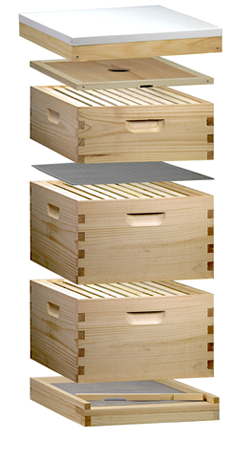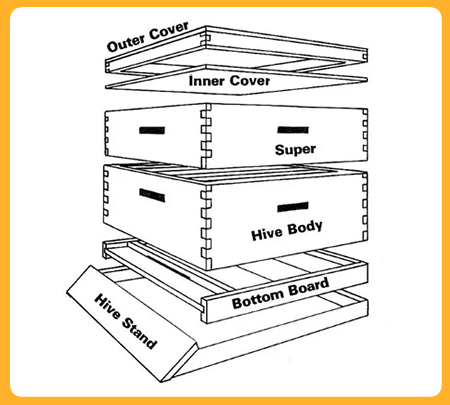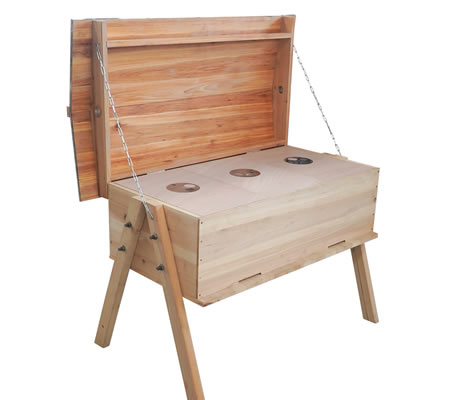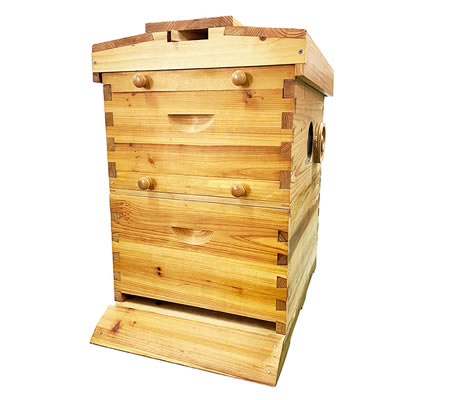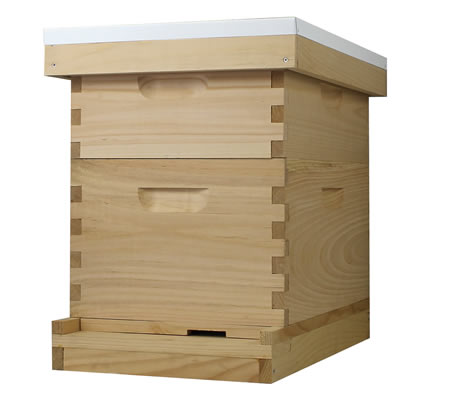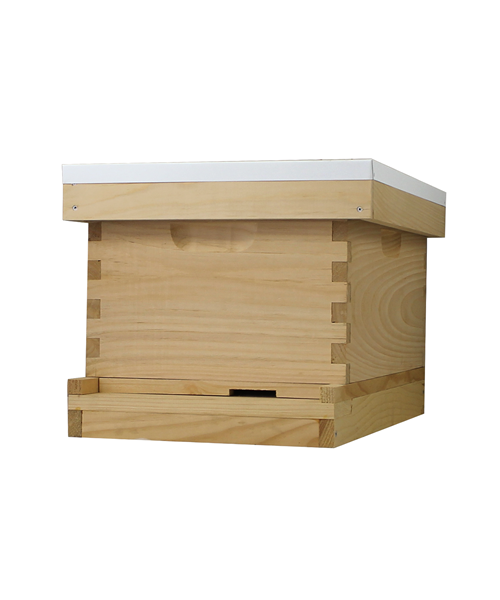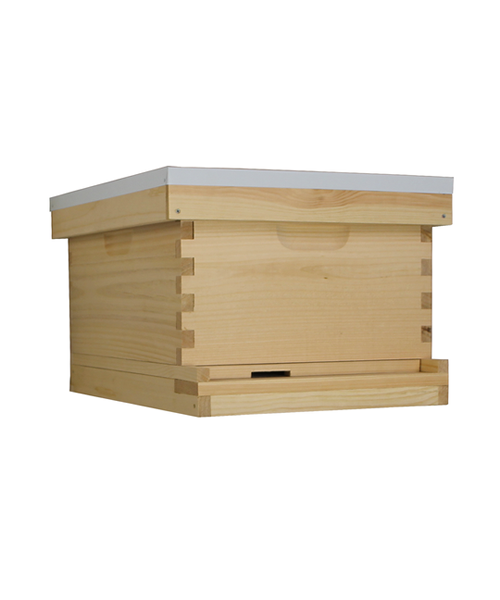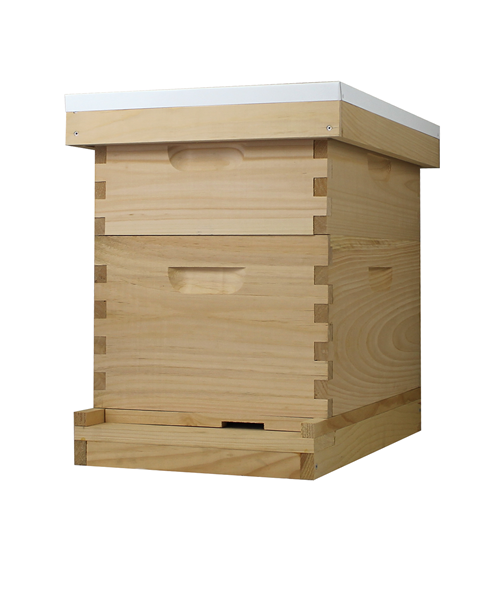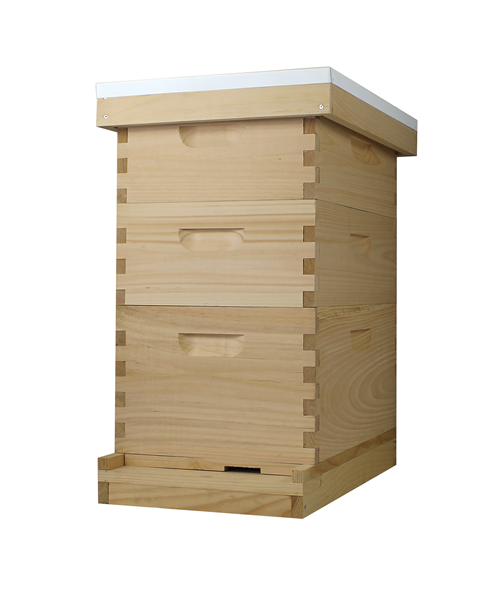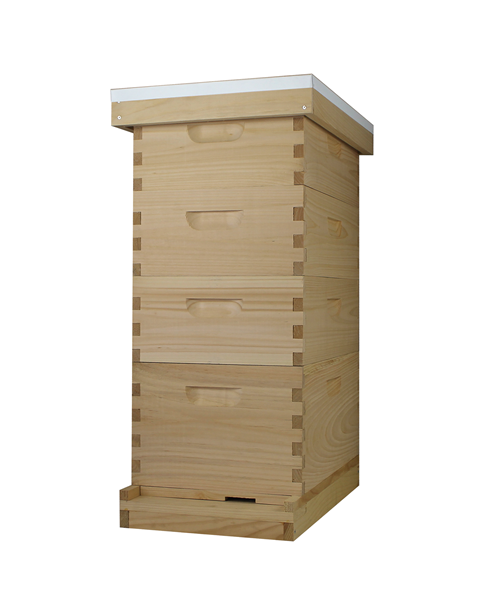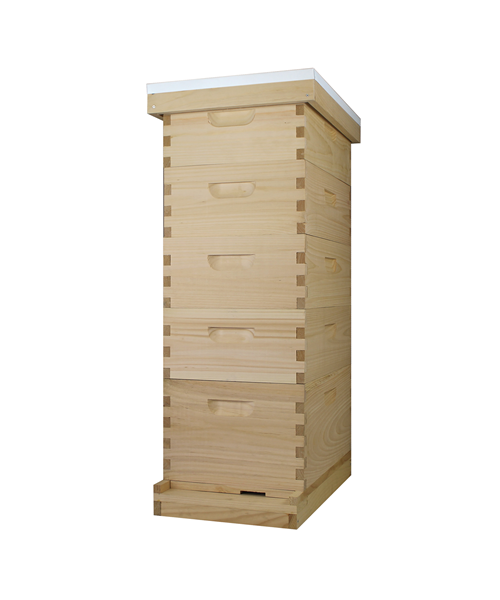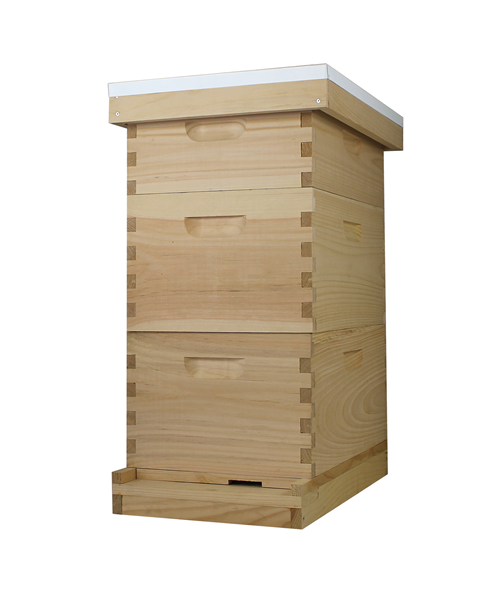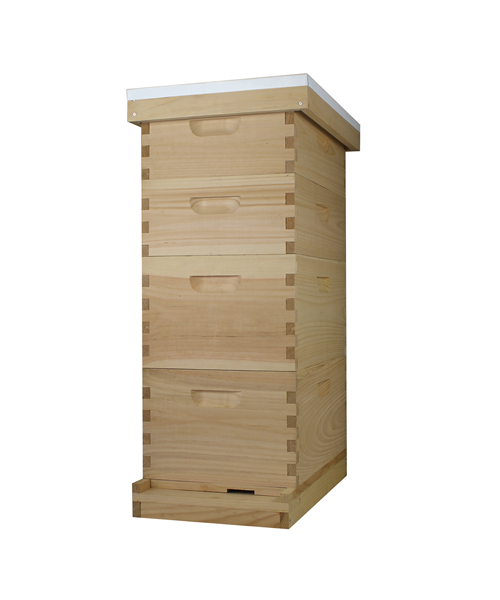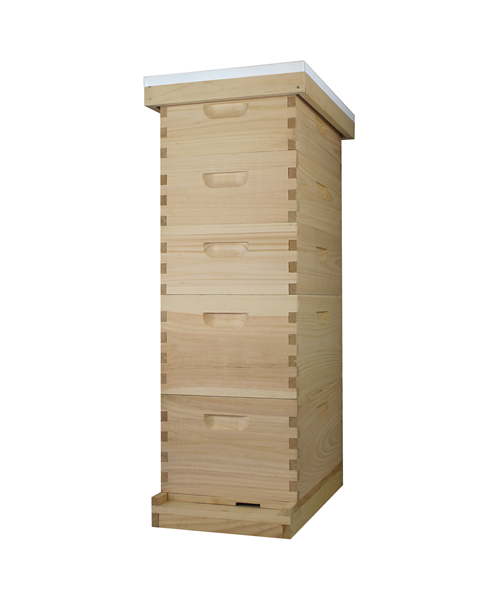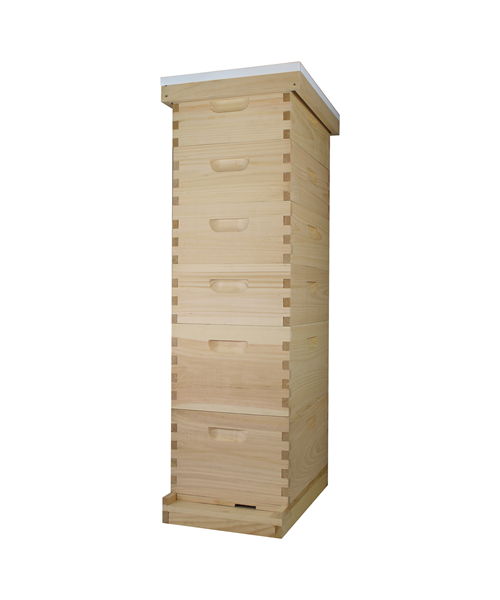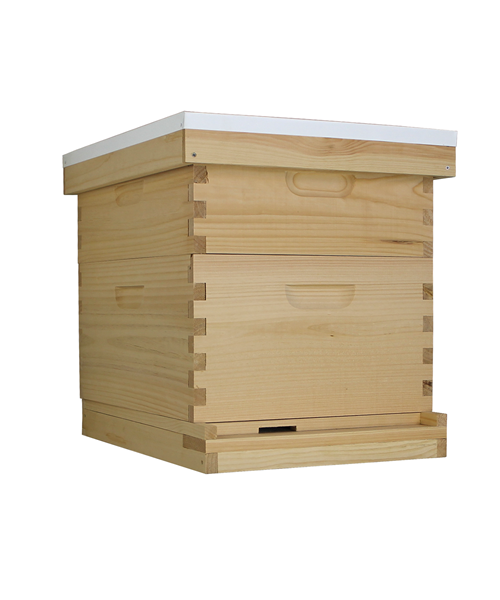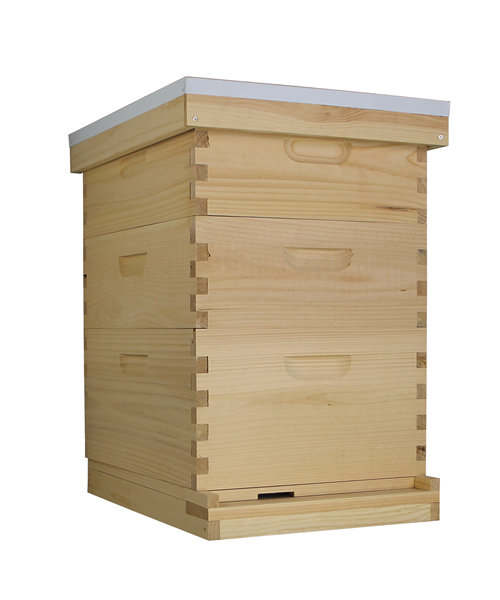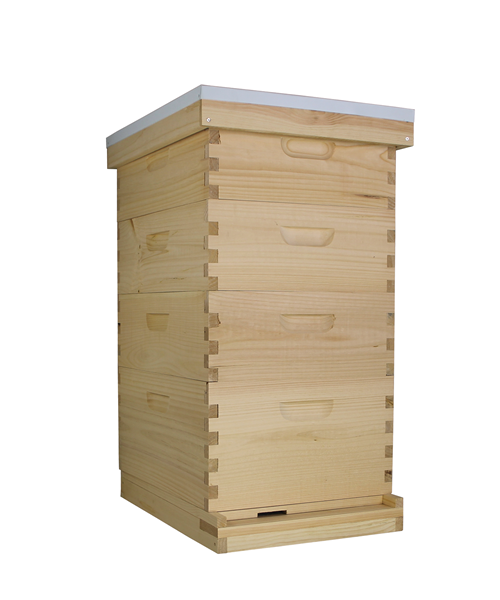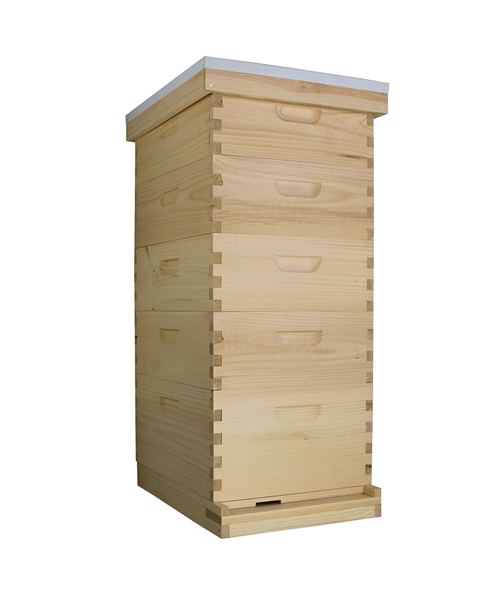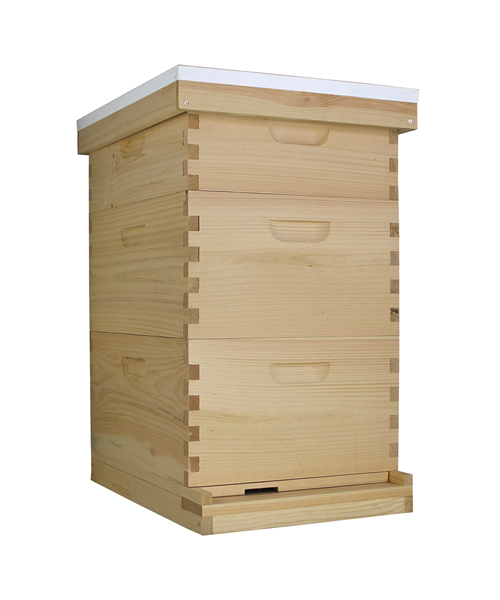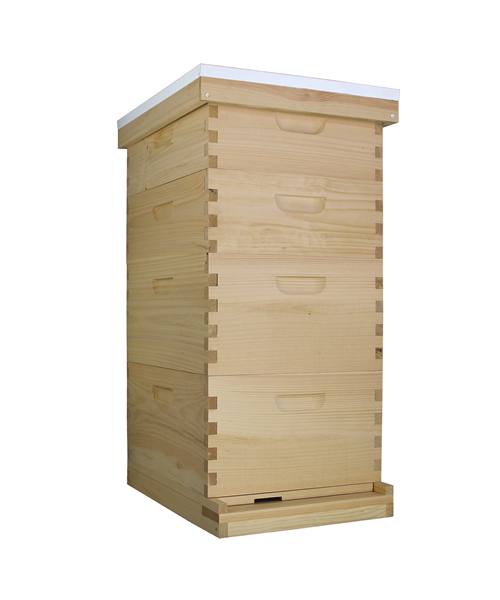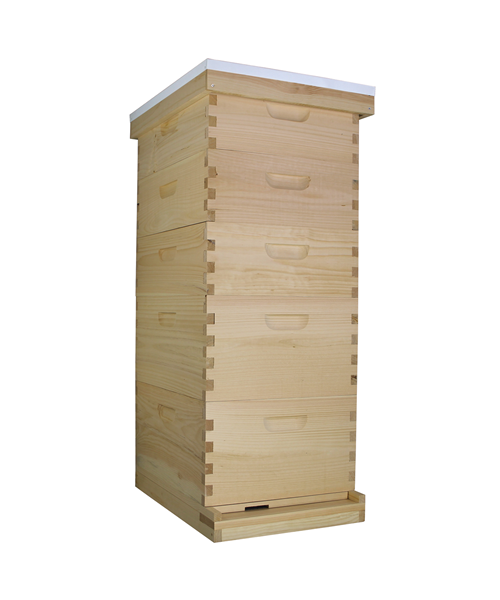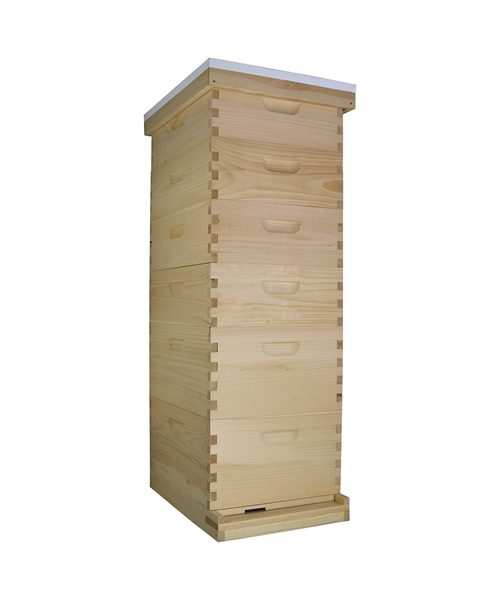Role of Beekeeping Hives in Apiculture
Beekeeping hives, also known as beehives, are integral components in the practice of apiculture, or beekeeping. They serve as the primary habitat and working space for honey bees, enabling beekeepers to manage bee colonies and harvest honey and other bee products. Let's delve deeper into the role of beekeeping hives in apiculture:
1. Providing Shelter and Habitat:
Beehives offer honey bees a secure and suitable environment for nesting, reproduction, and food storage. These structures mimic the natural cavities where bees would build their hives in the wild, providing them with protection from predators, adverse weather conditions, and other environmental factors.
2. Facilitating Colony Management:
Beekeepers use hives as a tool for managing bee colonies efficiently. The hive's modular design allows for easy inspection, monitoring, and manipulation of frames containing honeycomb. This facilitates tasks such as colony health assessments, pest and disease control, and queen management.
3. Harvesting Bee Products:
One of the primary purposes of beekeeping hives is to harvest valuable bee products, most notably honey and beeswax. Beekeepers can extract honey from frames within the hive using various methods, preserving the integrity and quality of the honey. Additionally, beeswax can be collected for use in candle making, cosmetics, and other applications.
4. Supporting Pollination:
Beyond honey production, beekeeping hives contribute significantly to agricultural pollination. Honey bees are prolific pollinators, transferring pollen from one flower to another as they forage for nectar and pollen. By maintaining healthy bee colonies in hives, beekeepers indirectly support crop yields and enhance ecosystem biodiversity.
In conclusion, beekeeping hives play a vital role in apiculture by providing bees with shelter, facilitating colony management, enabling the harvest of bee products, and supporting pollination efforts. These structures are indispensable tools for beekeepers, allowing them to maintain healthy bee populations while reaping the benefits of beekeeping sustainably.
Impact of Beekeeping Hives on Environment and Ecosystems
Beekeeping hives, while primarily serving as tools for honey production, also have significant impacts on the environment and ecosystems. Let's explore how beekeeping hives affect the environment:
1. Pollination:
Honey bees, housed in beekeeping hives, are vital pollinators for many flowering plants, including numerous agricultural crops. As bees collect nectar and pollen for their hive, they inadvertently transfer pollen grains from one flower to another, facilitating plant reproduction. This pollination process contributes to the reproduction of plants, maintenance of plant diversity, and fruit and seed production.
2. Biodiversity:
By promoting pollination, beekeeping hives indirectly support biodiversity within ecosystems. Many plant species rely on insect pollinators like bees for reproduction. Healthy bee populations sustained by beekeepers help maintain diverse plant communities, which, in turn, support a variety of animal species and contribute to ecosystem stability.
3. Habitat Creation:
Beekeeping hives, particularly when managed sustainably, can create additional habitat opportunities for bees and other beneficial insects. By providing suitable nesting sites and foraging resources, beekeepers contribute to the conservation of pollinator populations and enhance habitat diversity within agricultural and urban landscapes.
4. Conservation Education:
Engagement with beekeeping hives can raise awareness about the importance of pollinators and the need for environmental conservation. Beekeeping activities often involve community outreach, educational programs, and environmental initiatives that promote bee-friendly practices, habitat restoration, and pesticide reduction, fostering a culture of environmental stewardship.
In summary, beekeeping hives exert positive influences on the environment and ecosystems through their roles in pollination, biodiversity support, habitat creation, and conservation education. By recognizing and promoting these benefits, beekeepers can contribute to the preservation and enhancement of ecological integrity and sustainability.
Contribution of Beekeeping Hives to Economy and Communities
Beekeeping hives play a crucial role in both the economy and local communities, contributing to various aspects of livelihoods and social well-being. Let's explore how beekeeping hives benefit the economy and communities:
1. Economic Value:
Bee products harvested from beekeeping hives, such as honey, beeswax, royal jelly, and propolis, have significant economic value. These products are in demand in various industries, including food and beverage, cosmetics, pharmaceuticals, and apitherapy. Beekeeping operations generate income for beekeepers through the sale of these products, providing a sustainable source of revenue.
2. Employment Opportunities:
Beekeeping hives create employment opportunities within the apiculture sector and related industries. Beekeepers, honey extractors, bee product processors, and apiary technicians are among the roles directly involved in beekeeping operations. Additionally, ancillary businesses, such as equipment manufacturers, beekeeping supplies retailers, and agritourism ventures, contribute to job creation and economic development in rural and urban areas.
3. Agricultural Support:
Beekeeping hives contribute to agricultural productivity and food security by providing essential pollination services. Many crops, including fruits, vegetables, nuts, and oilseeds, benefit from bee pollination, resulting in increased crop yields and quality. The availability of healthy bee populations maintained by beekeepers supports agricultural sustainability and resilience to environmental stressors.
4. Community Engagement:
Beekeeping hives serve as focal points for community engagement, education, and social interaction. Beekeeping associations, clubs, and cooperatives bring together beekeepers and enthusiasts to share knowledge, experiences, and best practices. Community apiaries and beekeeping workshops provide opportunities for hands-on learning, environmental awareness, and networking, fostering a sense of belonging and cooperation among community members.
In conclusion, beekeeping hives contribute significantly to the economy and communities by generating economic value, creating employment opportunities, supporting agriculture, and promoting community engagement and social cohesion. Their multifaceted benefits extend beyond honey production, enriching livelihoods and enhancing the quality of life for individuals and communities alike.
Advancements in Technology and Innovation in Beekeeping Hives
Technological advancements have revolutionized the field of beekeeping, enhancing hive management practices, bee health monitoring, and honey production efficiency. Let's explore some of the latest innovations in beekeeping hives:
1. Smart Hive Monitoring Systems:
Smart hive monitoring systems utilize sensors and connectivity technology to track various parameters within bee colonies and hives. These systems can monitor factors such as temperature, humidity, hive weight, bee activity, and hive acoustics in real-time. Beekeepers can remotely access data from their hives using mobile applications or web interfaces, allowing for timely intervention in case of issues such as pest infestations or hive disturbances.
2. Precision Beekeeping:
Precision beekeeping techniques leverage data analytics, machine learning, and predictive modeling to optimize hive management practices. By analyzing large datasets on bee behavior, environmental conditions, and hive performance, beekeepers can make informed decisions to maximize honey production, minimize stress on bee colonies, and mitigate risks such as colony collapse disorder.
3. Automated Honey Extraction Systems:
Automated honey extraction systems streamline the honey harvesting process, reducing labor costs and increasing efficiency. These systems use centrifugal force or pneumatic pressure to extract honey from honeycomb frames quickly and with minimal disruption to bees. Some advanced systems can also filter and bottle honey automatically, ensuring hygiene and quality standards are met.
4. Hive Design and Materials:
Innovations in hive design and materials have led to the development of lightweight, durable, and environmentally-friendly hive components. Modern hive designs incorporate features such as modular frames, insulated walls, and ventilation systems to optimize bee comfort and hive functionality. Additionally, sustainable materials such as recycled plastics and natural fibers are being used to construct hives, reducing the environmental footprint of beekeeping operations.
In summary, advancements in technology and innovation have transformed beekeeping hives into sophisticated tools for hive management, honey production, and bee health monitoring. These innovations empower beekeepers to adopt data-driven approaches, enhance productivity, and promote sustainability in apiculture practices.
BEEKEEPINGhive® have become the standard choice for beekeepers worldwide due to their practicality, efficiency, and compatibility with modern beekeeping practices.



